Andaman and Nicobar Islands: Tribes
This is a collection of articles archived for the excellence of their content. |
Contents |
The main tribes
A backgrounder
Why the Sentinelese choose solitude even 60,000 years on, November 26, 2018: The Times of India
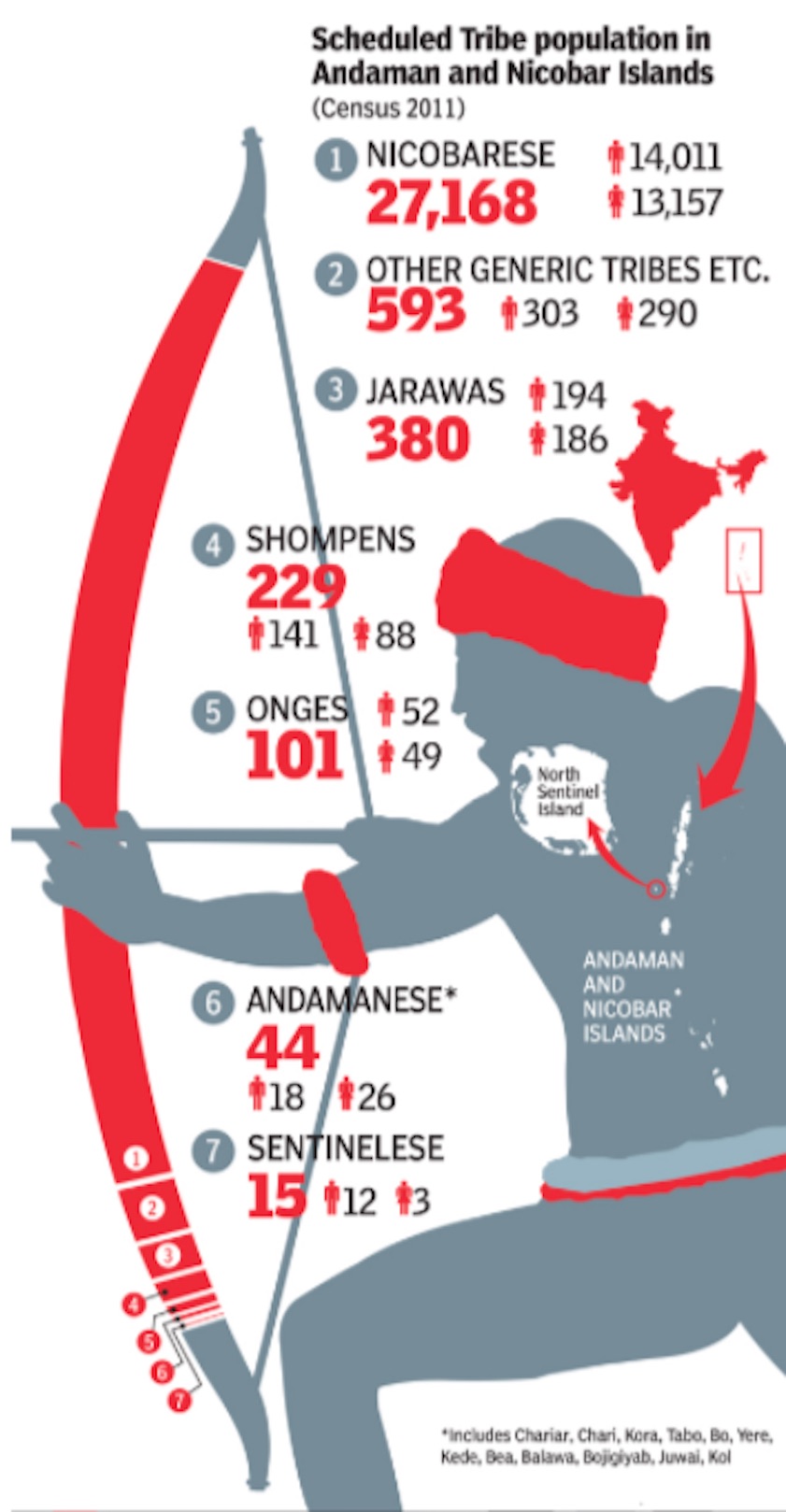
From: Why the Sentinelese choose solitude even 60,000 years on, November 26, 2018: The Times of India
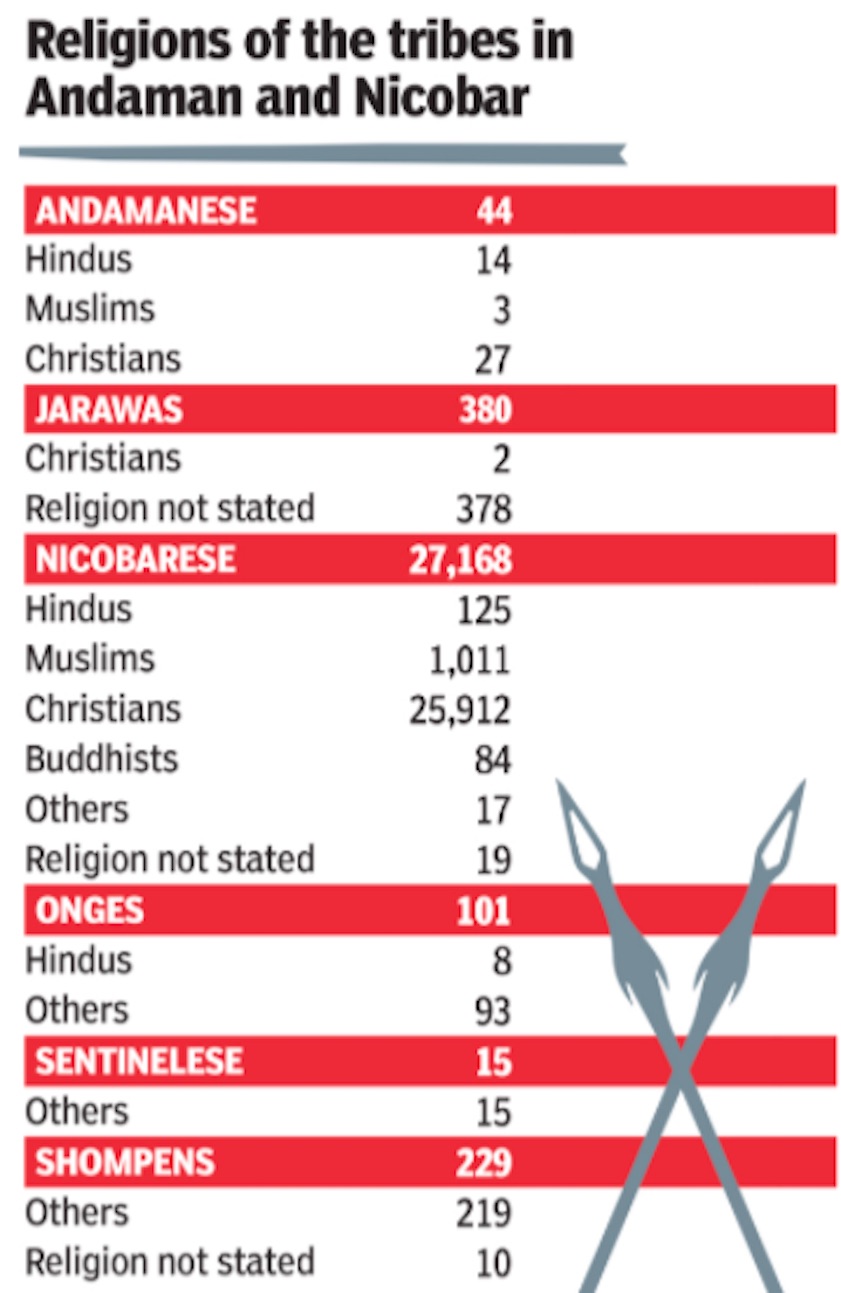
From: Why the Sentinelese choose solitude even 60,000 years on, November 26, 2018: The Times of India
What are the original tribes of Andaman and Nicobar Islands?
There are six original tribes in this archipelago of 572 islands spread over the Bay of Bengal from Land Fall Island in the north to the Great Nicobar Island in the south. Four of these — Great Andamanese, Onge, Jarawa and Sentinelese — are Negrito, dark-skinned ethnic groups who inhabit parts of south and southeast Asia. Survival International, a rights group for indigenous and uncontacted peoples, estimates Negrito tribes arrived in the Andamans from Africa up to 60,000 years ago. There are also two Mongoloid tribes — the Shompen and Nicobarese — who likely came from the Malay-Burma coast and have lived on Nicobar islands for thousands of years.
Are they all hostile to outsiders?
The first modern settlement of outsiders was established in 1789 by Lt. Blair at Chatham Island, now part of Port Blair. The settlers faced hostility from the start. The most determined effort to push out the British was the 1859 Battle of Aberdeen. But locals with bows and spears were no match for modern British troops. When the Britishers arrived, there were more than 5,000 Great Andamanese. After the battle and “mainstreaming”, they number 44 today. The Onges met a similar fate; from 670 in 1900 their population has declined to 101 today. The Jarawas, hostile till 1998, have been relatively successful in maintaining their population. But experts believe their condition has worsened after increased interaction with outsiders. In 1999 and 2006, Jarawas suffered outbreaks of measles, which has wiped out many indigenous tribes worldwide. Tourism has also led to exploitation, including sexual abuse of Jarawa women. Experts say the Sentinelese could be hostile to outsiders because of similar incidents.
What is the religious composition of these tribes?
Of the six original tribes, the overwhelming majority follow their original religions, which are largely unknown to us. The Nicobarese are the only tribe that follow mainstream religions and Christianity is the most popular. Some experts believe that the success of Christianity could have been the trigger for missionaries like John Allen Chau, whose attempt to interact with the Sentinelese has received widespread criticism.
What is their population?
It is difficult to have a normal house to house census for remote and hostile tribes like the Sentinelese, and so estimates have a wide range. Official data from census 2011 estimates the Scheduled Tribe population of the islands at 28,530. The overwhelming majority are the Nicobarese. Among the six original tribes, the Jarawas are a distant second while the Sentinelese constitute the smallest group.
… and their fears

From: November 24, 2018: The Times of India
See graphic:
The main tribes of the Andaman and Nicobar Islands… and their fears
Contacts of outsiders with Andaman, Nicobar Tribes
Amulya Gopalakrishnan, November 25, 2018: The Times of India

From: Amulya Gopalakrishnan, November 25, 2018: The Times of India
Whatever combination of recklessness and zeal possessed John Allen Chau, American adventurer and Christian missionary, to land on North Sentinel Island, with a football and a Bible, it didn’t end well. He wanted to “declare Jesus” to one of the last uncontacted tribes on earth.
But far from saving their souls, Chau presented a threat to their lives. The North Sentinelese are among the only surviving direct descendants of the first humans in Asia. In their 50-square-km island in the Andaman and Nicobar archipelago, they have lived apart from others for millennia. Raining arrows upon anyone who comes too close like Chau, they obviously want to keep it that way.
This makes sense since their long isolation has left them with no immunity to our germs. Contact with outsiders has been destructive to other indigenous communities in the Andamans — whether through colonial raids or civilising missions, settlers encroaching on their land and exploiting their resources, anthropologists bearing gifts or tourists throwing scraps of food, it is the others who have never left them alone.
“They have been on those islands anywhere between 20,000 and 40,000 years, and they’ve done fine without us. The Andamans would not have been a part of India if not for British colonisation, and that logic continues to operate even now. It became a convenient place to move refugees from Bangladesh. There has been no consideration of the native inhabitants, or water shortages or how fragile the island ecology is,” says Madhusree Mukerjee, author of ‘The Land of Naked People’, a book about the indigenous islanders.
The Andaman islands are home to four aboriginal tribes, who have been here for tens of thousands of years, long before the British, the Japanese or Indian presence. Each of these is a different story of clumsy external interventions. The Great Andamanese, the first to encounter outsiders, numbered around 5,000. In less than a century after the British established a penal colony, their numbers dwindled drastically as they succumbed to diseases like measles and syphilis. Now there are barely 50 of them, remnants of a lost culture, living on Strait Island. Entire languages, and the secret things they contained, have disappeared. “They are like lost souls, misfits who belong neither to our society nor what they used to be a 100 years ago,” says Anvita Abbi, a linguist who has studied the disappearing languages of the Great Andamanese.
The Onge too, in Little Andaman island, have been battered by an alien culture. After the British and the Japanese, it was the Indian state that settled mainlanders and refugees in the islands, clearing forests for plantations, farmland and settlements — making it harder for the Onge to access wild pig and dugong, spreading disease, inflicting heavy social pressure. They would be given bottles of alcohol, in exchange for precious resources like honey, resin, ambergris and turtle eggs. “We occupied and settled areas, confined them to a small space in a tribal reserve,” says Denis Giles, editor of the Andaman Chronicle. Now, with logging and poaching destroying their habitat and their way of life, “they totally depend on provisions we supply,” he says.
Only the Sentinelese, confined to their island, and not in the way of anyone else’s ‘development’, have successfully kept their distance. The Jarawas, whose space is surrounded by settled areas, and was cleaved by the Andaman Grand Trunk Road, have had decades of interactions with outsiders — an encounter that has been fraught by all accounts — from hostility to a partial softening by the late 1990s, and even forays into the society outside. ‘What have we given back? All kinds of diseases, sexual exploitation, poaching their resources,” says Giles. In recent years, video clips of Jarawa girls made to dance for policemen and tourist safaris had gone viral. “The Jarawas are in transition, there may be generational differences among them, when it comes to contact with outsiders – but it should be entirely their choice,” says Mukerjee.
Despite laws like the Andaman and Nicobar Protection of Aboriginal Tribes Regulation (1956), and Andaman Adim Janjati Vikas Samiti, a special policy for Jarawas framed in 2004 and a dedicated protection police, the spirit is weak when it comes to implementation. “In spite of so many cases registered, brought before the magistrate, the offenders are released on bail. Not even one person has been punished for breaking these laws, says Giles.
Cultural protection can’t be disentangled from ecological protection, says Pankaj Sekhsaria, scientist, environmentalist and writer. “These indigenous communities have the first right on land and resources, which the government of India has failed to recognise.” It is hard for them to survive when the forests, which their lives and practices are bound up with, are destroyed. “The 1,000 square kilometres of the Jarawa tribal reserve, for instance, holds the last of the remaining original evergreen forest of the Andamans, and it is more biodiverse than any wildlife sanctuary in these parts,” he points out.
All too often, the needs of the settlers and their economic aspirations have been expressed in a desire to “mainstream” and “integrate” indigenous people like the Jarawas, who are regarded as ‘Indian citizens’. This is just ignorant and racist, says Mukerjee, without an attempt to understand the indigenous people themselves. Their idea of the good life, their knowledge, their social and spiritual values are not the same as those of their neighbours. “What can you teach them? About Pandit Jawaharlal Nehru and Narendra Modi? How could that be meaningful in their lives,” asks Giles.
All ‘tribes’ cannot be painted with the same brush, says Abbi — the Andamanese tribes are entirely different from the central Indian groups or even the Nicobarese. “How can a society jump ahead tens of thousands of years?” More importantly, why should it? They know things we don’t — about fish, seashells, how to survive. Not one of them died during the 2004 tsunami, because they knew how to read the signs. “What does assimilation mean, they are already assimilated into their environment, and we are not,” says Abbi. While compiling her dictionary of the Great Anadamanese languages, she discovered they didn’t have a word for rape or sexual assault, but now they are painfully aware of what it means, having been attacked by outsiders.
We have to get beyond our own frames to appreciate human diversity, rather than interfere and assume that everyone wants what we want. For instance, the Jarawas orient themselves by the light and shade of the forest, according to the anthropologist Visvajit Pandya —this lightscape is crucial to their social order. If your daily practices involve stars and fireflies, and you dread intense heat and light — then wouldn’t it make sense that electric lightbeams are registered as an assault, not an amenity? In other words, your vision of development isn’t necessarily the same as theirs.
Now, there has been a grand push for tourism in the Andamans, floated by the Niti Aayog, which seems to assume that the islands are virgin territory, to be made over at will. Restricted area permits were removed from several islands, including North Sentinel and Little Andaman. “Of the many islands in the Andamans that might be suited for tourism, why pick those most vulnerable, which are home to indigenous groups?” asks Giles.
And, as the police considers retrieving Chau’s body, it should not compound his error by going to the island or inviting a confrontation, “further contact could be absolutely lethal”, warns Mukerjee.
Uncontacted tribes, India and the world
The last few remaining Sentinelese, believed to number around 15, have come into the limelight following the death of American preacher-traveller John Allen Chau on November 17, 2018 in the patch of Andaman Islands populated by them.
But there are are plenty of other tribes that live in majestic isolation.
MORE THAN 100 UNCONTACTED TRIBES
Like the Sentinelese, according to estimates, there are more than 100 uncontacted groups around the world, mostly in the densely forested areas of South America and New Guinea, such as Awá (Brazil), Papuan tribes (West Papua), Mashco Piro (Peru) and Kawahiva (Brazil).
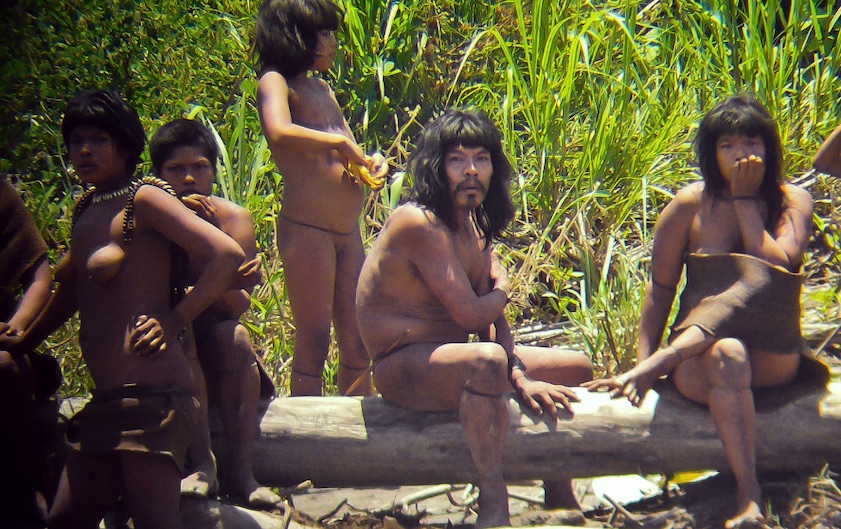
From: The Times of India

From: The Times of India
THE ENDANGERED
India too is home to hundreds of indigenous people and tribes, of which 75 are classified as Particularly Vulnerable Tribal Groups (PVTGs)
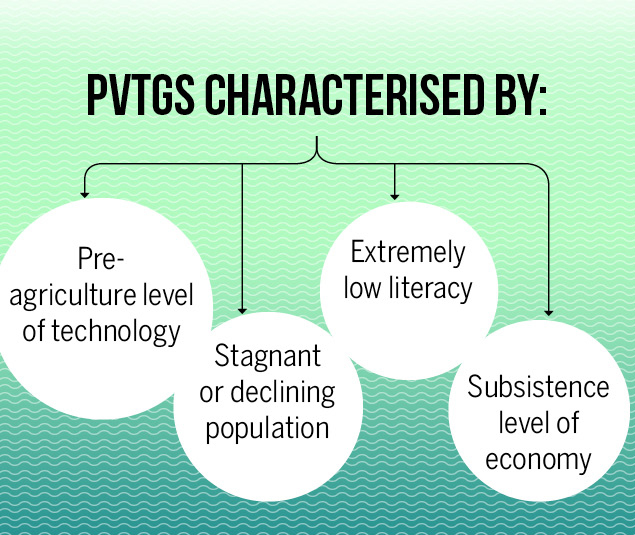
From: The Times of India
DWINDLING NUMBERS

From: The Times of India

From: The Times of India
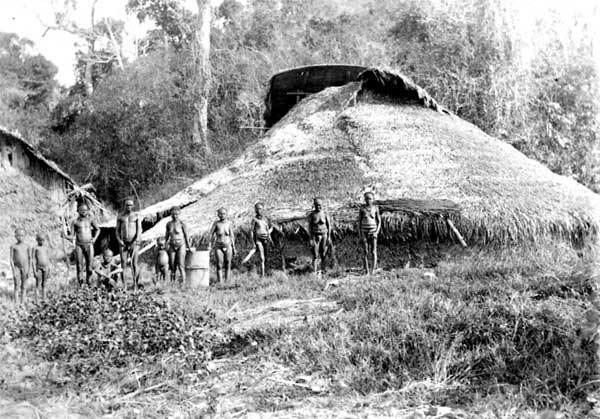
From: The Times of India
REMOTE HABITATS
These groups generally inhabit isolated, remote and difficult areas, ranging from plains and forests to hills. The Sentinelese inhabit the small North Sentinel Island (60 sq. km.) and because of the geographical separation from other islands, they have maintained strict isolation from the rest of the world. It is illegal to make contact with the tribe although curbs on visiting the tiny island were lifted in August 2018.

From: The Times of India
The Jarawas of the Andaman islands saw their land split in two when the administration built a highway (Andaman Trunk Road) through their territory, which is now being used by settlers, tourists and poachers targeting their reserve.

From: The Times of India

From: The Times of India
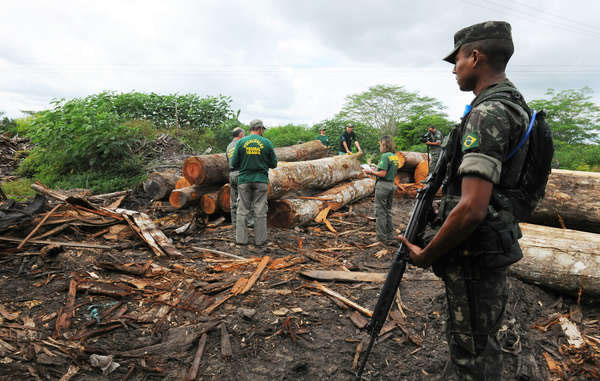
From: The Times of India
THE WAY FORWARD
Development has not reached several tribes, but many do not want it either. A fine balance between development and respecting the rights, culture, traditions and privacy of these people is required.
See also
Andaman And Nicobar Islands: Fauna
Andaman And Nicobar Islands: Flora
Andaman And Nicobar Islands: Natural calamities
Andaman and Nicobar Islands: Parliamentary elections
Andaman and Nicobar Islands: Tribes
Census India 1931: The Population Problem in Andaman and Nicobar Islands